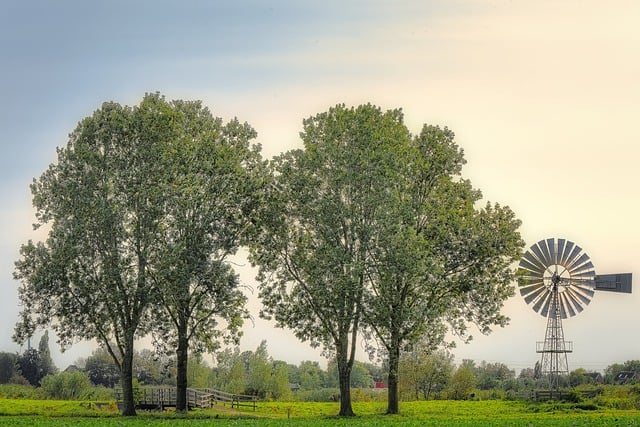In New Bedford, Massachusetts, a wooden fence can enhance your property’s curb appeal and security. This article guides you through the process of installing a sturdy and aesthetically pleasing wooden fence. We’ll explore the essential considerations, from understanding local regulations and choosing the right wood to following a step-by-step installation process. Additionally, we’ll delve into maintenance tips and highlight the advantages of professional installation, ensuring your new fence stands the test of time while complementing your New Bedford home’s unique character.
- Understanding Wooden Fence Requirements for New Bedford Homes
- Benefits of Professional Wooden Fence Installation
- Choosing the Right Wood Types and Designs
- The Step-by-Step Process of Fence Installation
- Tips for Maintaining Your New Wooden Fence
- Local Regulations and Permits for Fence Construction
Understanding Wooden Fence Requirements for New Bedford Homes
When considering wooden fence installation in New Bedford, Massachusetts, homeowners must first understand their specific requirements. The climate plays a significant role; harsh winters and frequent storms demand sturdy, durable fencing that can withstand the elements. Additionally, local regulations and neighborhood associations may have guidelines regarding fence height, style, and materials, ensuring compatibility with existing landscapes and architectural styles.
Homeowners should also consider the purpose of the fence: privacy, security, or aesthetic appeal. Each need dictates different designs and installations. For instance, a tall, solid wood fence offers maximum privacy, while a decorative picket fence provides a more open view and a touch of elegance. Understanding these requirements is key to choosing the right wooden fence installation service for your New Bedford home.
Benefits of Professional Wooden Fence Installation
Hiring professional fence installation services for your wooden fence in New Bedford, Massachusetts, comes with numerous advantages. First and foremost, professionals bring expertise and experience to the table, ensuring that your new fence is not only aesthetically pleasing but also structurally sound. They can offer guidance on the best type of wood suitable for your climate and local conditions, promoting longevity and durability.
Professional installation also saves you time and effort. It eliminates the need for heavy equipment, complex tools, and significant physical labor, which can be demanding and dangerous for DIY enthusiasts. Moreover, professionals handle all aspects of the job, from measuring and planning to digging holes and securing posts, leaving you with a seamless and high-quality fence finish.
Choosing the Right Wood Types and Designs
When it comes to wooden fence installation, selecting the right wood types and designs is essential for a durable and aesthetically pleasing result. New Bedford, Massachusetts, residents have a variety of options to choose from based on their preferences and budget. Hardwoods like oak, cedar, and redwood are popular choices due to their natural beauty and resistance to rot and insects. These woods offer long-lasting performance and can enhance the curb appeal of any property.
Design-wise, there’s a vast array of styles available, from traditional picket fences to elegant privacy panels. Consider the purpose of your fence; is it for security, privacy, or purely aesthetic reasons? Each design caters to different needs, offering varying levels of visibility and protection. Whether you opt for a simple, classic look or a more intricate pattern, ensuring compatibility with your home’s architecture and landscape design is key to achieving a harmonious exterior space.
The Step-by-Step Process of Fence Installation
Installing a wooden fence involves several steps to ensure a sturdy and aesthetically pleasing result. It begins with measuring and marking the perimeter of the desired fence line, taking into account any gates or openings that need to be incorporated. Next, dig post holes at predetermined locations using an excavator or shovel, ensuring the depth and width meet the recommended specifications for stability. After setting the posts in place, secure them with concrete to create a robust foundation.
The next phase involves attaching the fence panels to the posts. This may include cutting the panels to size and using brackets or nails to fasten them, creating a continuous barrier. Finally, finishing touches like adding gates, latches, and any decorative elements are installed, completing the fence installation process.
Tips for Maintaining Your New Wooden Fence
To keep your new wooden fence looking its best, regular cleaning and maintenance are essential. Start by sweeping or brushing away any debris, leaves, or dirt that may accumulate on the fence’s surface. Use a soft-bristled brush or a pressure washer for deeper cleaning, ensuring you don’t apply too much force to avoid damaging the wood.
Apply a fresh coat of sealant or paint every few years to protect your fence from the elements. Check for any signs of rot, cracks, or damaged boards and repair them promptly. Regular inspection will help prevent small issues from becoming bigger problems. Keep plants and trees well-trimmed to avoid their roots pushing against the fence, which can cause damage over time.
Local Regulations and Permits for Fence Construction
Before starting any construction project in New Bedford, homeowners must familiarize themselves with local regulations and obtain necessary permits, including those for fence installation. The city’s building department oversees these permits to ensure compliance with safety and zoning standards. The regulations cover various aspects, such as permitted fence types, height restrictions, and placement relative to property lines and public spaces.
Permits are required for wooden fences exceeding specific heights or located in front of or within a certain distance from street corners or alleys. It’s crucial to check the local ordinance to understand these requirements, as they can vary based on neighborhoods and property types. Failure to adhere to these regulations may result in project delays or fines, so it is essential to consult with New Bedford’s building department early in the planning process.
